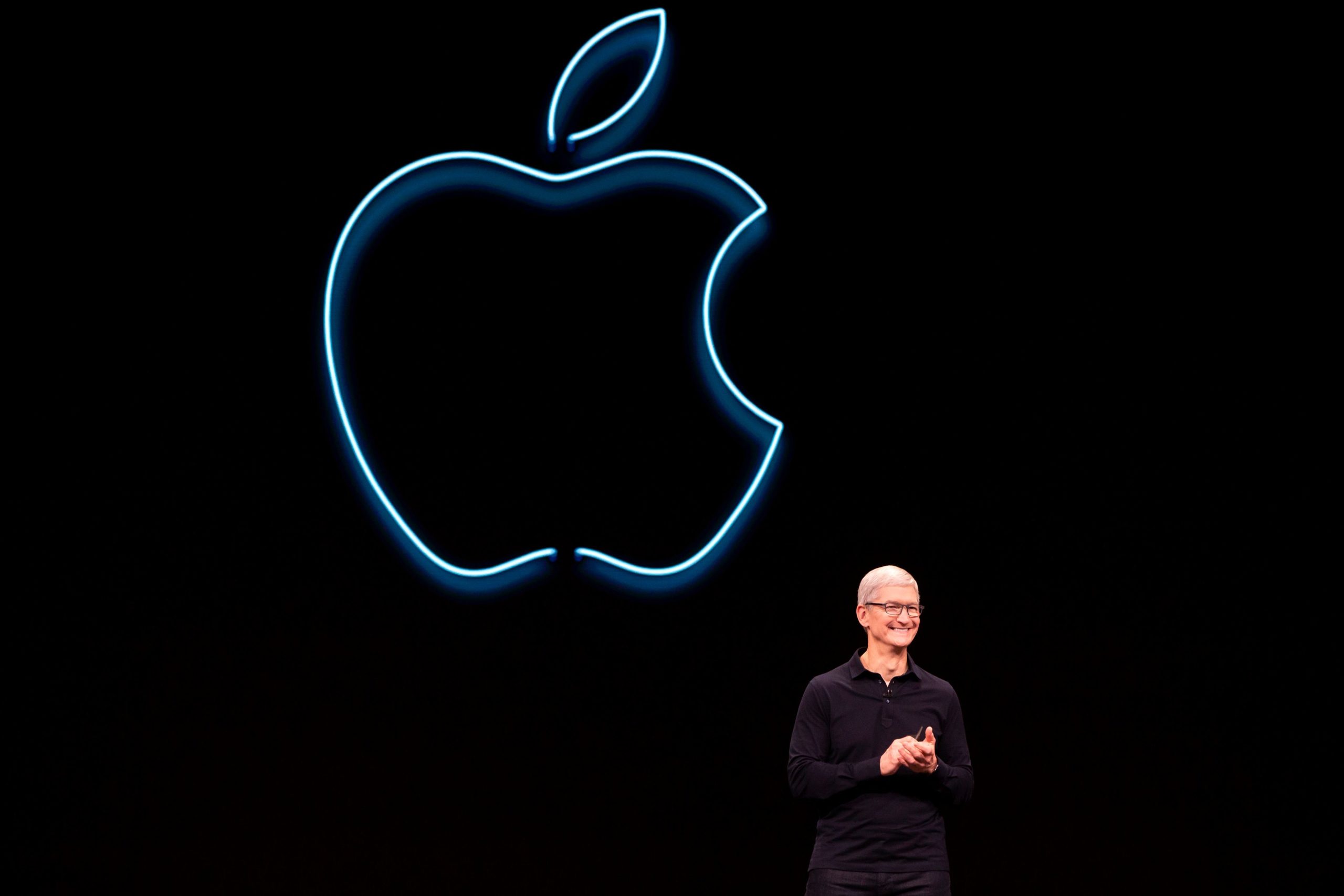Apple hit a new milestone on Wednesday, becoming the first publicly traded U.S. company to reach a market capitalization of over $2 trillion and doubling in valuation over the last two years.
KEY FACTS
The iPhone maker’s stock is up almost 55% so far in 2020, and shares have rallied more than 106% since the market hit a low point amid the coronavirus recession on March 23 (compared to the benchmark S&P 500’s gain of 51% over that period).
Now trading at nearly $470 per share, Apple’s stock is at an all-time high, and Wall Street analysts are still quite bullish that it can continue to rally: 61% give it a “buy” rating and 27% a “hold” rating, according to Bloomberg data.
Apple’s market cap now eclipses that of other U.S. tech giants, including Microsoft ($1.7 trillion), Amazon ($1.6 trillion), Google parent Alphabet ($1.1 trillion) and Facebook ($761 billion).
Loading...
Apple was also the first U.S. company to reach a $1 trillion market cap, which it did just over two years ago, on August 2, 2018.
On July 31, 2020, after reporting strong third-quarter earnings, Apple surpassed Saudi state oil giant Aramco to become the world’s most valuable publicly traded company.
While Saudi Aramco surpassed a $2 trillion valuation in December 2019, plunging oil prices amid the coronavirus pandemic have since hurt its stock.
SURPRISING FACT
At $2 trillion, Apple’s market value is now higher than the GDP of numerous developed countries, including Italy, Brazil, Canada, Russia and South Korea, to name a few.
WHAT TO WATCH FOR
Apple shares are about to get more affordable for investors, too. The company will finalize its four-for-one stock split at the end of August, which means a single share will be worth around $117. While the value of the company will remain the same, there will now be more shares available trading at lower prices.
KEY BACKGROUND
Apple has thrived during the pandemic, as many people were forced to stay at home. The company has benefited from work-from-home trends and strong online sales; It posted record third-quarter earnings in late July, with nearly $60 billion in revenue, not to mention double-digit growth in its products and services segments.
FURTHER READING
-Sergei Klebnikov, Forbes Staff
Loading...
